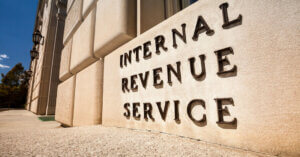
On November 29, 2018, the IRS released a memorandum that contains new procedures for making both offshore and domestic voluntary disclosures. These procedures are effective for all voluntary disclosures received or postmarked after September 28, 2018. For domestic voluntary disclosures on or prior to this date, the IRS has discretion to apply these new procedures. This memorandum comes on the heels of the end of the former IRS program for making offshore voluntary disclosures, OVDP. Like its predecessors, this new program is designed as a means for taxpayers who may have been acting willfully or fraudulently with possible criminal exposure to come forward into compliance with the law and potentially avoid criminal prosecution. Those with significant civil penalty exposure may also want to consider whether a timely voluntary disclosure would mitigate some of these penalties.
There are significant differences between this new program, OVDP and the previous domestic voluntary disclosure programs. However, these new procedures should provide some clarity and relief for those taxpayers who were not able to file for OVDP relief by the time the program was closed. Those taxpayers who were considering filing for relief through domestic voluntary disclosure programs but who were frustrated by the lack of program structure–including a set disclosure period or penalty regime–may be comforted by the more concrete structure of this new disclosure program.
How Does the New Program Work?
The following is a step-by-step description of how the new voluntary disclosure process should work, as outlined by the memorandum:
- A taxpayer will make a voluntary disclosure preclearance request using Form 14457.
- Criminal Investigation (CI) will screen the request to determine taxpayer eligibility for the program.
- Assuming preclearance is granted, taxpayer must submit to CI all required voluntary disclosure documents using Form 14457, including information related to taxpayer noncompliance; a narrative providing the facts and circumstances, assets entities, related parties; and any professional advisors involved in the noncompliance.
- CI will notify the taxpayer by letter of preliminary acceptance of the voluntary disclosure submission.
- CI will forward the voluntary disclosure letter and attachments to the Large Business & International (LB&I) Austin unit for case preparation before examination.
- LB&I routes the voluntary disclosure case for case building and assignment to the appropriate Business Operating Division and Exam for civil examination. Taxpayers who wish to make a payment prior to case assignment can remit to the LB&I Austin unit.
- Exam will review the voluntary disclosure and handle it in accordance with standard examination procedures.
- Assuming taxpayer cooperation, the IRS expects that voluntary disclosures will be resolved by agreement with full payment of all taxes, interest and penalties for the disclosure period.
- Taxpayers who disagree with the exam, with no resolution agreed upon, retain the right to go to Appeals. More guidance is needed to explain the Appeals process in cases where no resolution is reached through the new voluntary disclosure program.
The memorandum instructs that the process will generally include a six year disclosure period, or fewer years in cases where the noncompliance is applicable. This is less than the eight years that were previously required by OVDP. However, IRS examiners have the ability to expand this to all noncompliance years if the voluntary disclosure is not otherwise resolved by agreement. For all years at issue, taxpayers must file all required tax returns and reports, and pay the corresponding taxes and interest on all unreported income. IRS examiners will determine the penalties that apply to the voluntary disclosure. The memo states that the IRS also will provide procedures for examiners to request revocation of preliminary acceptance of a voluntary disclosure when taxpayers fail to cooperate.
What Are the Penalties That May Be Imposed?
The memorandum states that penalties include:
1. 6663 Civil Fraud Penalty or 6651 Civil Fraudulent Failure to File Penalty
The IRS will assess this penalty for a single tax year with the highest tax liability, except that in limited circumstances this can be applied to up to all six years based on the facts and circumstances of the case (i.e., failure to cooperate and/or resolve the exam by agreement). Basically, this means that the penalty for underpayments of tax has increased from 20 percent in most cases under OVDP to up to 75 percent in this new program. A taxpayer can request that the 6662 Accuracy Related Penalty be applied instead of the Civil Fraud Penalty or Civil Fraudulent Failure to File Penalty. However, the memo notes that the granting of lesser penalties is “expected to be exceptional.” A taxpayer who wishes to request a lesser penalty should be prepared to present convincing evidence that justifies why the civil fraud penalties set forth above should not apply.
2. Willful FBAR Penalties
Per IRM 4.26.16 and 4.26.17, in most cases, the total penalty amount for all years under examination will be limited to 50 percent of the highest aggregate balance of all unreported foreign financial accounts during the years under examination. Willful FBAR penalties are subject to discretion; examiners may recommend a penalty that is higher or lower than 50 percent based on the facts and circumstances. In no event will the total penalty amount exceed 100 percent during the years under examination. A taxpayer can also request that the non-willful FBAR penalties are applied but this is likely to be exceptional, and taxpayer should plan to provide evidence supporting this request.
3. Failure to File Penalties for Information Returns
The memorandum states that these penalties will not automatically be imposed, but the memo gives discretion to the examiner to impose these, stating that they should “take into account the application of other penalties . . . and resolve the examination by agreement.”
4. Penalties for Excise Taxes, Employment Taxes, Estate and Gift Tax
These penalties will be handled by examination based on the facts and circumstances of the case. If these are at play, exam can coordinate with appropriate subject matter experts.
Are the Other IRS Voluntary Disclosure Programs and Correction Procedures Still Intact?
The memorandum states that the IRS’ Streamlined Filing Compliance Procedures, the Delinquent FBAR submission procedures, or the Delinquent International Information Return submission procedures are still intact, although the memorandum notes that “they could be discontinued at any time.” The memorandum also notes that taxpayers who did not commit any tax or tax related crimes and do not need the voluntary disclosure practice to seek protection from potential criminal prosecution can continue to use these programs or the amended return process to correct past mistakes.
Final Thoughts
We expect more guidance to be issued on the new voluntary disclosure program. Overall, the change from eight years of disclosures in OVDP to six years for disclosures in this new program is welcome. However, some of the increases in penalties are not. Further, the program provides more structure and clarity than the prior voluntary disclosure procedures, but it leaves more to the “facts and circumstances” than previous OVDP procedures. As such, it may be harder to estimate the total tax liability for clients prior to submitting their voluntary disclosure application.
If you have any questions about voluntary disclosure, or any other tax issue, please contact Eric Nemeth or Katie Roskam.
